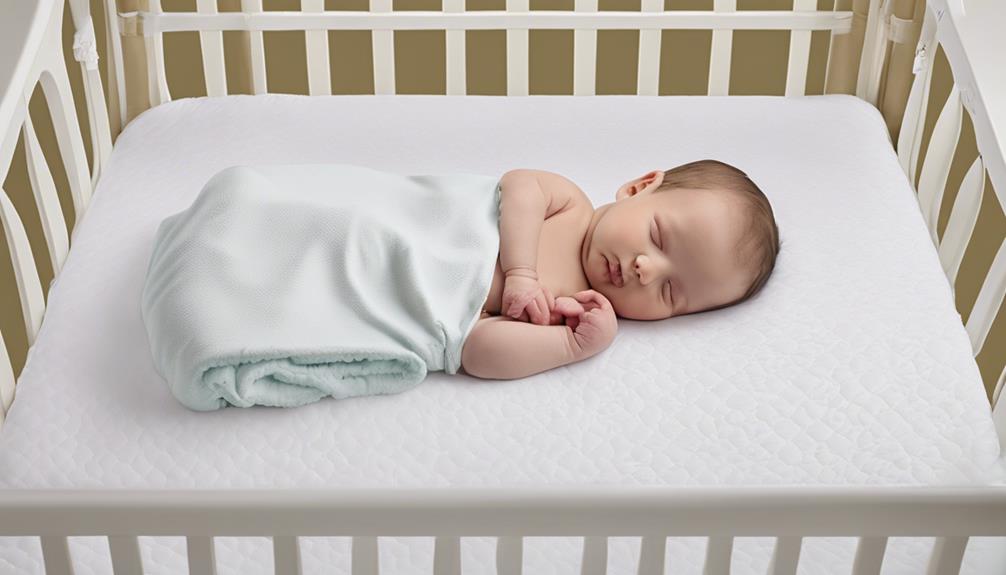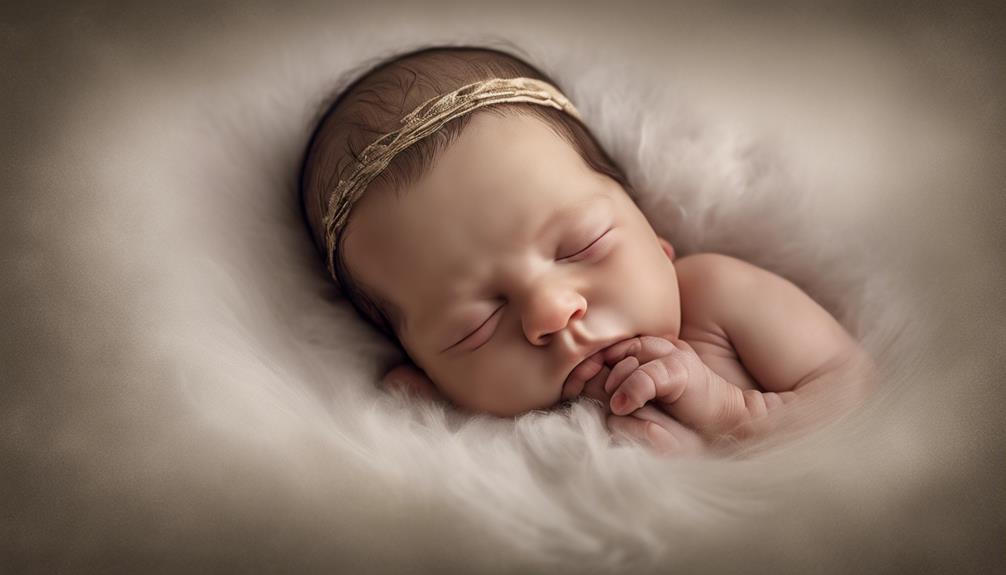When it comes to newborn sleep safety, the balance between convenience and security is key.
But what exactly makes Pack 'N Plays the go-to choice for many parents seeking a safe sleeping option for their little ones?
Let's explore the features and guidelines that make Pack 'N Plays a reliable choice for infant slumber, ensuring peace of mind for caregivers.
Key Takeaways
- Use a firm mattress and avoid loose bedding in the Pack 'N Play for safe newborn sleep.
- Always lay your newborn on their back, share a room, and prioritize safety measures.
- Follow manufacturer's guidelines for attachments and transition to a crib when your baby outgrows the Pack 'N Play.
- Ensure a secure sleeping environment, monitor size/weight limits, and prioritize your baby's sleep needs.
Pack and Play Sleep Safety Tips
When setting up your Pack 'N Play for your newborn's sleep, prioritize safety by following these essential tips.
Pack 'N Plays are specifically designed to provide a secure sleep environment for infants, meeting CPSIA standards for safe use.
It's important to use a firm mattress in the Pack 'N Play and avoid any loose bedding to reduce the risk of suffocation or Sudden Infant Death Syndrome (SIDS).
These precautions help create a safe sleeping space, ensuring your little one can rest peacefully.
Setting Up a Safe Sleep Environment
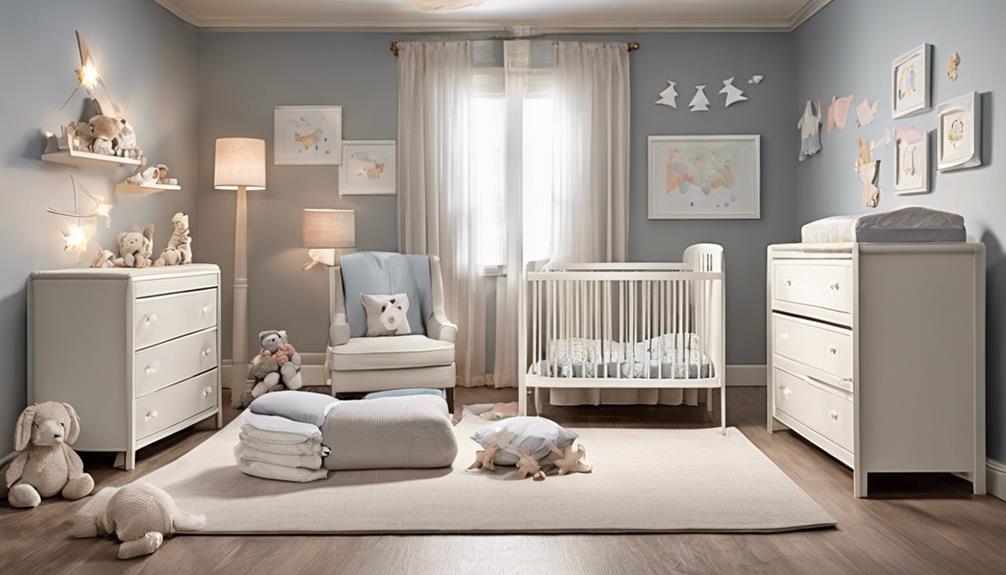
To guarantee a safe sleep environment for your newborn in the Pack 'N Play, prioritize using a firm mattress with no gaps and avoiding loose bedding or pillows near the baby's sleeping area. It's important to make sure the Pack 'N Play is set on a firm surface with secure sides to prevent any accidents or mishaps during sleep.
Room sharing with your baby is recommended as it has been shown to reduce the risk of SIDS. Always remember to place your baby on their back for sleep in the Pack 'N Play, as this position is the most secure.
Safe Sleep Practices for Newborns
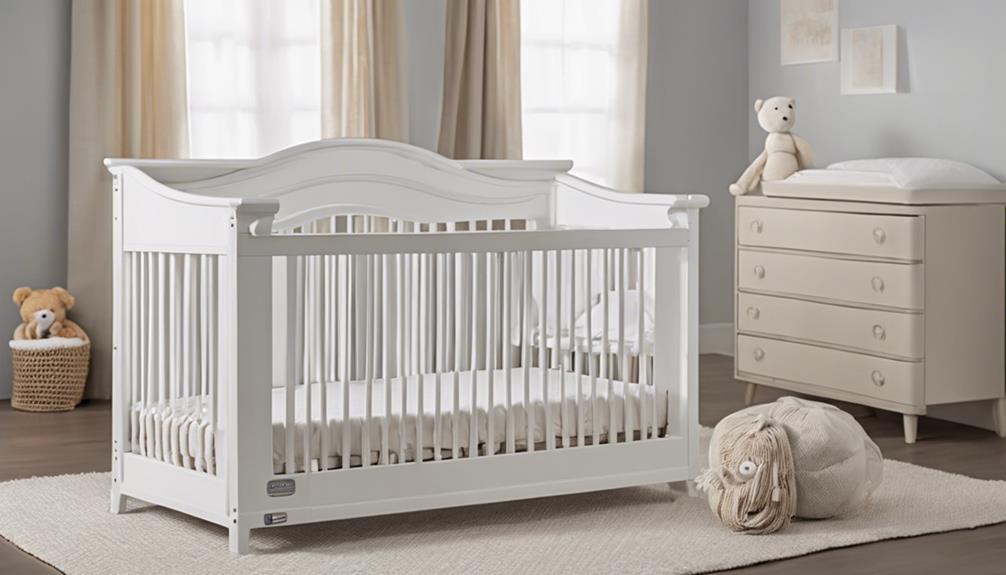
Wondering how to guarantee a safe sleep environment for your newborn in a Pack 'N Play? When it comes to your precious baby's sleep, ensuring safety is paramount. Here are three essential safe sleep practices to keep in mind:
- Back to Sleep: Always lay your newborn on their back to sleep in the Pack 'N Play. This position helps reduce the risk of SIDS, providing a safer sleep environment for your little one.
- Firm Mattress: Opt for a firm, snug-fitting mattress with no gaps in the Pack 'N Play. A proper mattress supports your baby well and minimizes the risk of suffocation or entrapment during sleep.
- Room Sharing: Share a room with your newborn to monitor their sleep closely. Room sharing not only allows you to keep a close eye on your baby but also promotes a strong sense of security and comfort for both you and your little one.
Pack and Play Attachment Safety
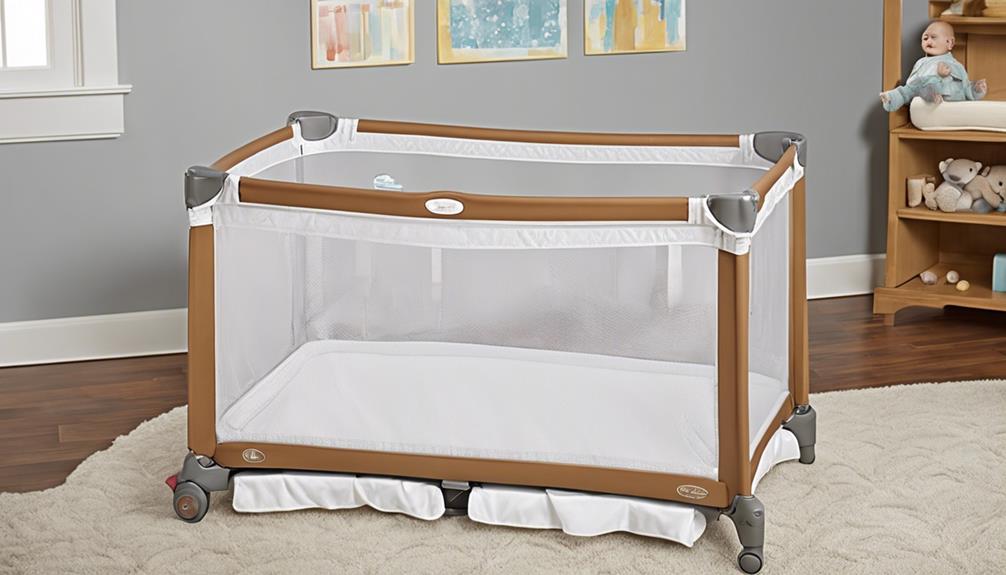
Ensuring the safety of your newborn while using Pack 'N Play attachments is important for creating a secure sleep environment. When using attachments like bassinets or changing stations in your Pack 'N Play, it's critical to follow safe sleep practices. For supervised diaper changes, these attachments are safe to use. However, once your baby starts rolling, it's best to switch them to the bottom play area on a firm, flat surface to prevent any accidents.
Here's a helpful table to guide you on Pack 'N Play attachment safety:
| Attachment | Safety Guidelines | Recommended Usage |
|---|---|---|
| Full-sized Bassinets with Integrated Padding | Ensure safe infant sleep in Pack 'N Plays | Use for supervised sleep and naps |
| Half-sized Bassinets or Changing Stations | Avoid unsupervised sleep in these attachments | Reserve for supervised diaper changes only |
| Manufacturer's Recommendations | Always follow instructions for safe attachment use | Prioritize safety and adhere to guidelines |
Remember to always prioritize your baby's safety and follow the manufacturer's recommendations for secure attachment usage.
Transitioning Out of Pack and Play Sleep
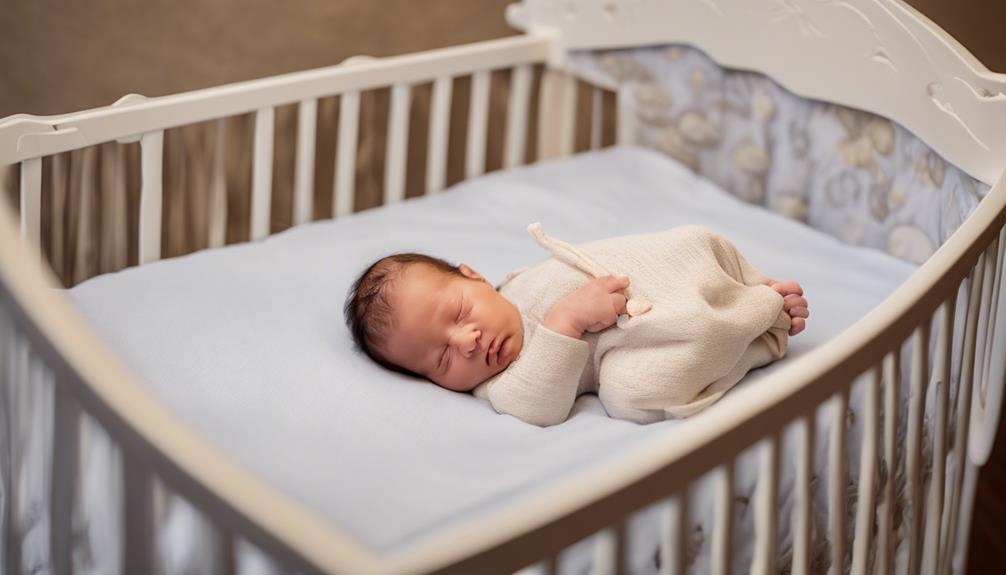
As your baby grows and develops, their safety during sleep remains a top priority, necessitating a smooth moving out of the Pack 'N Play when they exceed 35 inches or 30 pounds.
- Safety First: Moving your baby out of the Pack 'N Play is essential for their safety as they outgrow its size and weight limits.
- Comfort Matters: A crib provides more space for your growing baby, preventing them from feeling cramped and uncomfortable during sleep.
- Monitoring Growth: Keeping track of your baby's size and weight is important in determining the right time to make the move to a crib.
It's important to pay close attention to your baby's development to ensure a safe and comfortable sleeping environment. Moving to a crib when your baby no longer fits comfortably in the Pack 'N Play is a natural progression that supports their ongoing sleep needs. By monitoring their growth rate and addressing safety concerns promptly, you can create an environment that promotes restful and secure sleep for your little one.
Conclusion
To summarize, when it comes to newborn sleep safety, the Pack 'N Play guide offers essential tips and practices to create a secure sleep environment for your little one. By following these guidelines, you can rest assured that your baby is sleeping soundly and safely.
Remember, a peaceful night's sleep for your baby means peace of mind for you as well. Sweet dreams to all the little ones out there!




